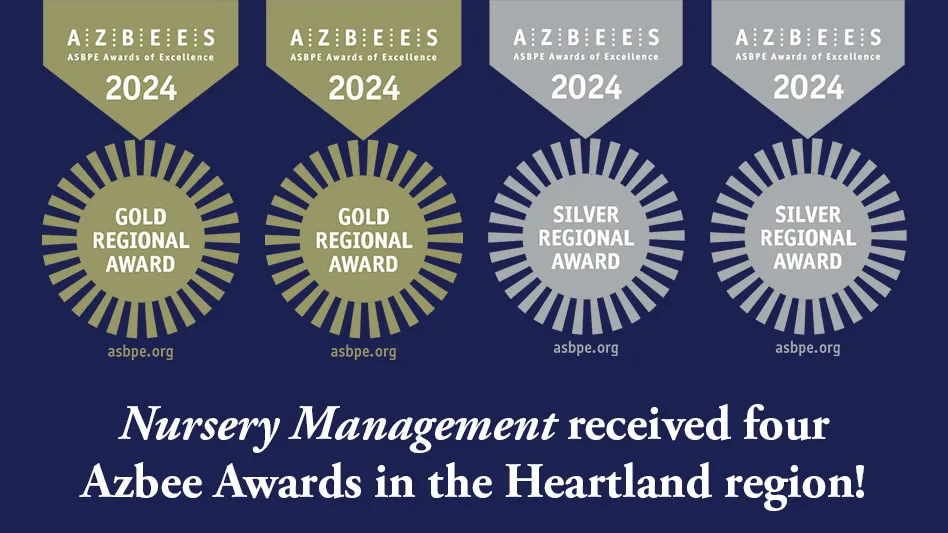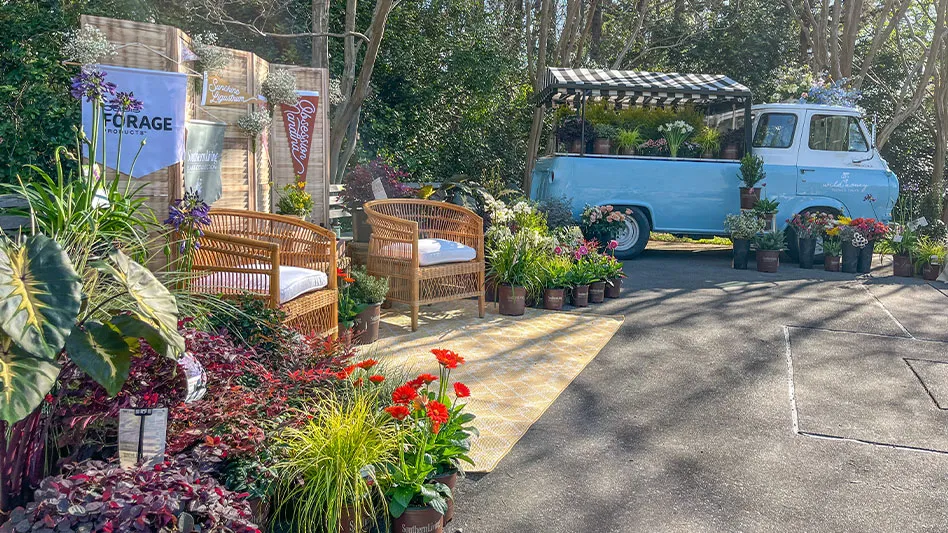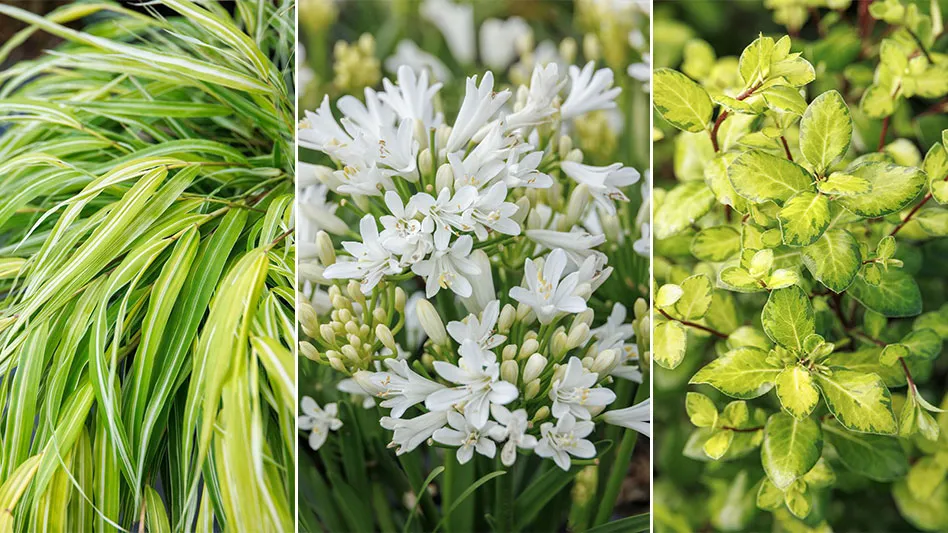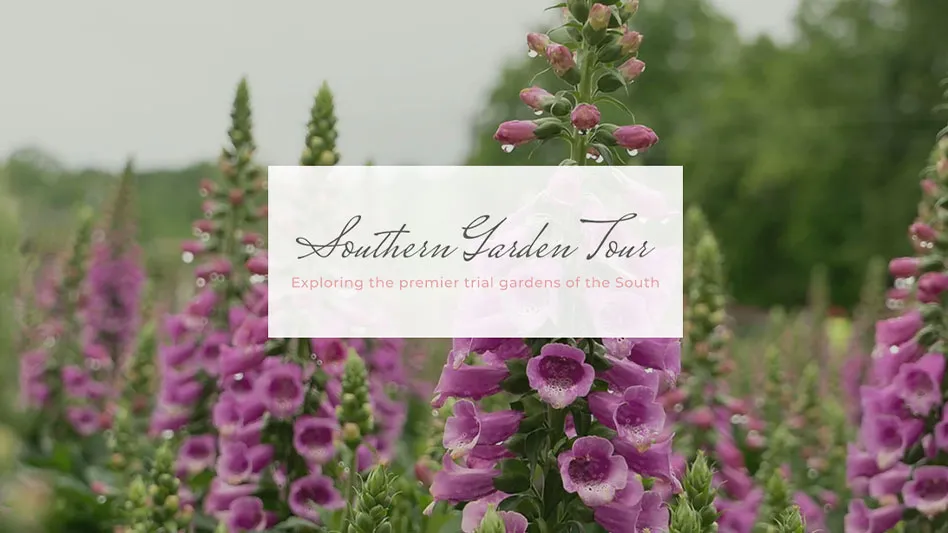
While profit margins and marketing plans are certainly serious business, Peter Van Rijssen of Concept Plants strives to inject joy into his and his customers’ professional lives. This model helps improve the customer relationship across the supply chain and even spills over into marketing ideas of the plants he represents.
You need only to look at his Facebook page or his YouTube channel to immediately see the zest he has for plants and life in general. At trade shows, you’ll see him decked out in some of the most imaginative sport coats made from botanical inspired material. On YouTube, you’ll find him in all sorts of getups, including a blue morph suit talking about Festuca Beyond Blue, or in an elf costume drumming up excitement about Rhodoxis Fairy Tale.
“It is important to me to bring people a smile. Every day is a day to enjoy,” says Van Rijssen.
Concept Plants was founded by Peter and his father, Reinier in January 2007. It’s the North American arm of Plantipp, which is based in the Netherlands. Concept Plants represents breeders and helps them introduce new plants to the North American market. Some of Concept Plants’ tasks include helping breeders with plant patents, trials, license agreements and collecting royalties.
Although Peter helped his dad with Plantipp from a young age, including helping him at shows and visiting nurseries, Peter was determined to pave his own way. And he wasn’t initially convinced that the horticulture industry was his destiny. Peter took some courses and worked for a few car sales’ companies, but learned quickly that he didn’t have his heart in that industry. He then worked for a hydrangea grower in the Netherlands.
“My parents never pushed me to do something. I never wanted to be the son of the parents who just ‘gets’ the company only because I’m part of the family. Finally, I decided that I wanted to grow into my father’s business. And to do that, I needed to create my own network, work at different nurseries to get the experience of how the industry works, and work in different countries with different cultures,” Peter explains.
He worked at nurseries in Canada, New Zealand, North America, Japan and Africa. And from those experiences, he learned about multiple cultures and how the global horticulture market not only differs, but fits together.
“It helped me create an eye for seeing where a product can work,” he says. “If a breeder shows me a new plant, I can see in which countries the variety can work.”
One valuable cultural lesson came from working in Japan.
“In Japan it is very important to bring a small gift to each visit. So when I go to Japan, I will always take nice, small presents with me. It’s important for the long-term relationship.”
Peter also learned that honesty and transparency are critical to making a customer relationship work.

“We inform breeders what is not going well and what is going well with their varieties. It is easy to snap a picture or short movie when I’m visiting a nursery. We send that to the breeder, and they are happy to be informed,” he says. “In some cases, the trials or growth at a nursery doesn’t go well. The breeder needs to be informed of this, too. Perhaps the breeder can advise what is going wrong and how to make it better.”
Another one of Peter’s goals is to tell the breeders’ story and give them the recognition they deserve.
“They need to get recognition in the market. It is important for the growers and the consumers to know who is behind the plant,” he says. “They have so much passion about their work, which must be recognized.”
Growers are looking for plant innovation, and Peter works as a liaison between the breeders and growers to find the best fit for new plants.
Concept Plants represents the Jewel of Desert series of Delosperma, bred by Koichiro Nishikawa. Plants in this series do not need vernalization to flower and are reblooming varieties.
“That is good for the grower because it makes their sales window long, and that is also good for the consumer because they enjoy flowers for a long time,” Peter says.
The company also represents the EverColor series of Carex, bred by Pat Fitzgerald of Ireland. These evergreen varieties can be used alone, in seasonal mixed combos, en masse or in a living wall, a use that intrigues the next generation of consumers.
Peter spends a lot of time thinking about how to improve sell-through to the end consumer.
He’d like to see warehouse-type stores create a vignette for plant sales.
“A consumer walks by and will buy the plants if they’re in a small container and look nice. They will buy it as a gift for their family or for their own patio.”
For garden center sales, he says the retailers must improve how plants are merchandised.
“As a garden center, I would make an inspiration center for the consumer. Show the consumer what they can do with the plants. Make show gardens where consumers can walk around. This way a consumer can say, ‘I want that plant or a collection of plants,’ scan them and they’ll be delivered at home. Or let the consumer say, ‘I want that same show garden in my house.’ The garden center can do the landscape in their garden and supply the plants, too, or contract with a landscape designer.”
Other ways to reach more consumers is to create more value.
Sell a hydrangea as not only a beautiful landscape plant, but as a means to make a bouquet of cut flowers, too, he suggests. When selling Sambucus, let the consumer know they can make tea or syrup from the flowers.
“Those types of things are an extra ‘gift’ to the consumer,” he says.
For the current and the next generation of consumers, Peter says it’s up to the entire industry to do a few things.
“Show them why green is so important. Show them green is making people happy. Show them people have a better concentration level when they are surrounded by green. Show them what you can do with green. Show them green is alive. And make fun with green.”
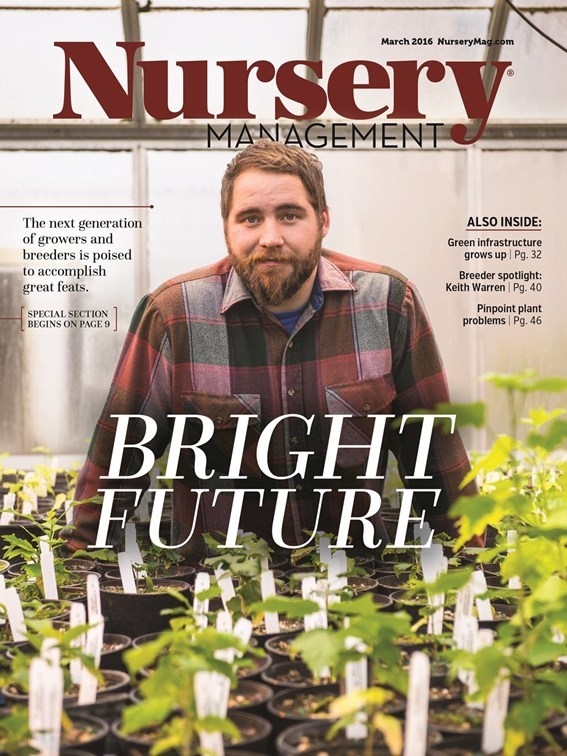
Explore the March 2016 Issue
Check out more from this issue and find you next story to read.
Latest from Nursery Management
- Registration opens for Darwin Perennials Day
- April 2024 issue recap
- U.S. Department of Labor finalizes farmworker protection rule
- Azo Root is now available from Harrell’s
- Smith Gardens assumes operations of Skagit Horticulture
- Garden Media Group announces the fifth annual Women in Horticulture Week
- Eason Horticultural Resources announces the addition of Phil Perry
- Perennial Plant Association celebrates 40th anniversary
